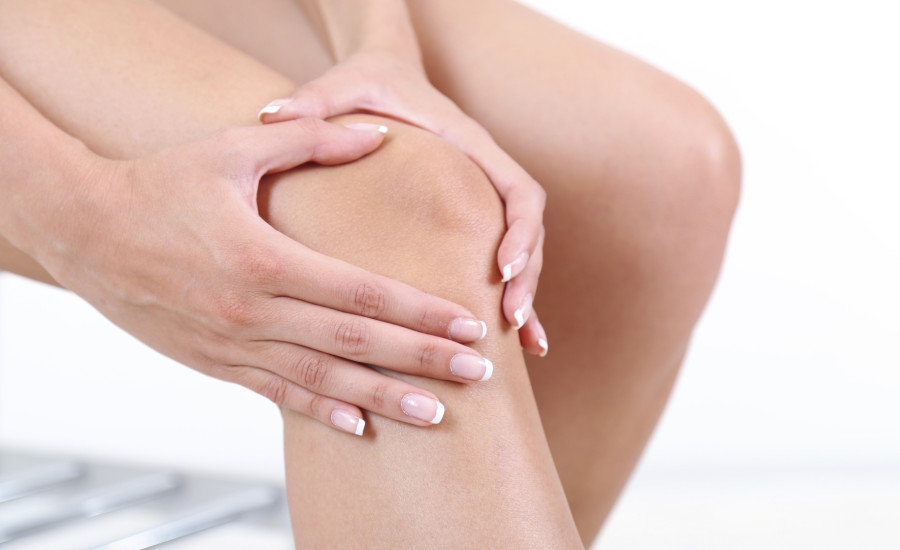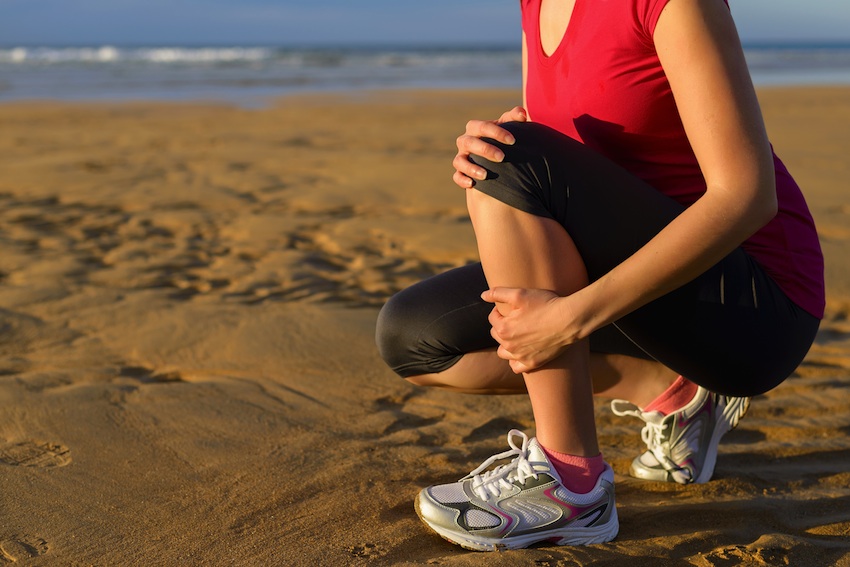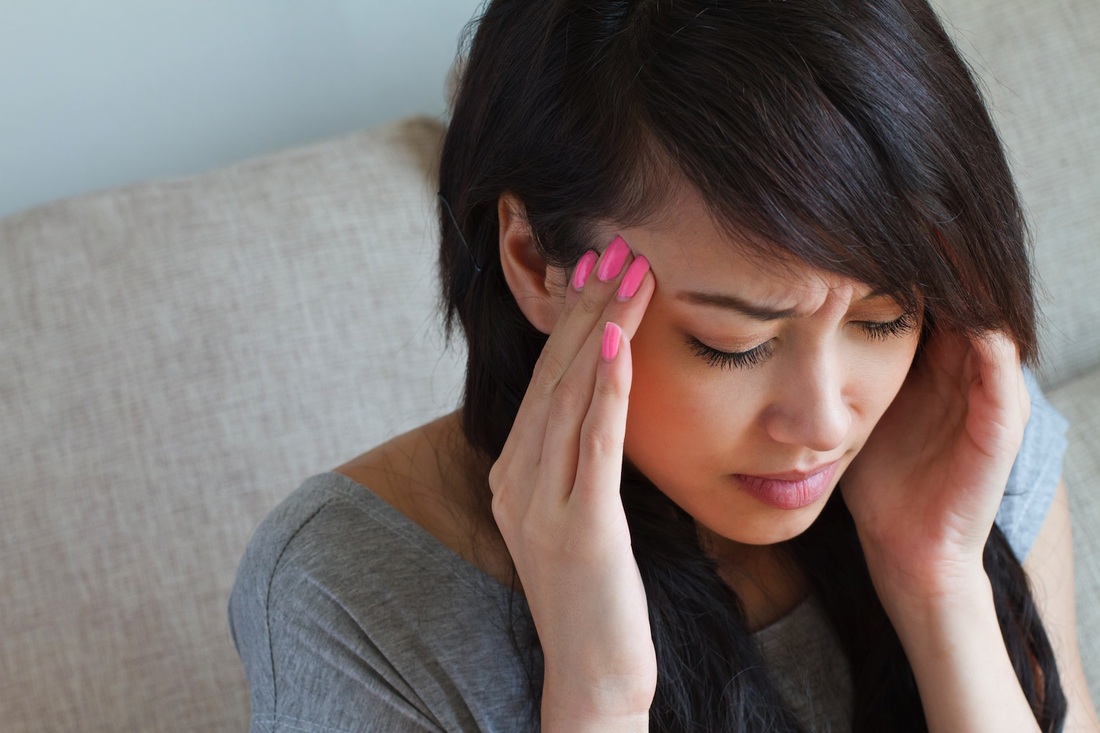|
If you suffer from Sciatica, chances are you've tried several home remedies to relieve the pain. Anything to get rid of the tingling, numbness, or shooting pains that race down your legs. But, did you know physical therapy can be an effective treatment?
What is Sciatica? Sciatica is the symptom of pain down the leg that people may experience typically due to an issue in the lower back. The sciatic nerve starts at the low back and runs down the buttock and then branches out through the back of the leg down to the foot. There are many reasons for why the sciatic nerve may begin to cause pain or discomfort. Common problems resulting in sciatica may include a herniated disc, stenosis or narrowing of the nerve space, tightness in the hip, or misalignment of the pelvis. Sciatica symptoms may include pain, numbness, tingling, cramping, burning, and weakness in the muscles of the involved leg. How does Physical Therapy help? Physical Therapists have many techniques/forms of treatment that may help. Treatments may vary depending on the presentation of pain. They may include McKenzie-based mechanical diagnosis and therapy, muscle energy techniques, mobilizations, spinal stabilization and core strengthening exercises, nerve slides/glides, or even traction. Often people will respond by moving in certain directions. Movement is critical because this is what helps exchange fluids and nutrients within your spinal discs, keeping them healthy, and preventing pressure from recurring on your sciatic nerve. The key takeaway here is that while it may seem counterintuitive, prescribed exercises from a physical therapist are a far better route than bed rest in the pursuit of relieving sciatica pain. Of course, if you have a flare-up of pain, take a day or two to rest. Being inactive for a period any longer than that and you risk making the pain worse. If you suffer from sciatica pain, please contact our office to be seen by one of our highly skilled physical therapists. We would love to help you get back to living the life you love.
0 Comments
Chances are that if you asked those around you, nearly everyone would admit that they have experienced knee pain to some degree. Whether it’s caused by arthritis, excessive foot pronation, or overuse of the muscles that protect these vulnerable joints, our knees take a beating. In fact, did you know that knee arthritis is the single greatest cause of chronic disability among U.S. adults ages 65 and older?
Here’s the good news: most chronic knee pain is avoidable. Research published in the New England Journal of Medicine suggests that exercise and physical therapy can be just as effective as surgery for relief from chronic knee pain related to arthritis. By strengthening and stretching key muscles and by learning ways to protect and take care of our knees, we can ultimately prolong the health of our knees. Here are 5 ways you can prevent and ease knee pain:
A shin splint, which is medically referred to as tibial stress syndrome, is a painful injury to the shin that commonly affects runners, but also dancers and other athletes.
Shin pain most often occurs on the medial side of the shin (termed medial tibial stress syndrome, or MTSS) but can also occur on the lateral or anterior side of the lower leg. Shin splint pain develops due to the overexertion of pressure on muscles in the lower legs causing stress on the tissues in that region. If left untreated, shin splints can lead to lower leg compartment syndrome or even a stress fracture. Several risk factors have been identified to increase the likelihood of developing shin splints, particularly in runners. These factors include being of female gender, previously experiencing shin pain, having fewer years of running experience, previously using orthotics, having high body mass index, having a dropped foot bone (the navicular bone) and in males, the likelihood increases if you have excessive external rotation in your hips. Obviously some of these risk factors cannot be changed (such as your gender!) but many of these factors as well as others can be addressed by your Physical Therapist in order to lower your chances of developing shin splints. Unfortunately there are no proven methods available to definitively prevent shin splints. There are several strategies, however, that may help in preventing shin splints. These strategies include wearing appropriate fitness shoes, warming up before engaging in recreational activities, gradually increasing activity so the body can adapt, discontinuing the activity if you start experiencing pain in the shins, keeping your body weight in check, and seeking the attention of a Physical Therapist before pain arises in order to assess your running or sport biomechanics. For active individuals such as runners, it is important to take time to find a comfortable shoe that protects the foot and promotes normal mobility. Bulky and ‘shock-absorbing’ shoes may not be the ideal type to allow body’s natural foot and ankle placement. If you do not have any foot injuries or complications, minimalist type shoes, which replicate the movement of a bare foot are highly recommended. However, you will likely need to seek advice on transitioning from your current footwear to minimalist shoes to avoid injuries from sudden change. Minimalist type shoes improve the strength of the feet over time by allowing the feet to bear more of the impact force that is experienced during physical activity. In addition, they promote an increased cadence (step frequency), which subsequently decreases the strain on your lower extremities. There is also reliable evidence available on prevention of shin splints by using shock-absorbing insoles within your shoes, however, more quality research is certainly required before this advice becomes universal. Your Physical Therapist can assess your running and walking pattern, as well as assess your foot and lower extremity alignment and biomechanics to help you determine the best footwear. Taking adequate time for the feet to adjust to new shoes and gradually increasing the level of physical activity, along with replacing your shoes regularly in order to maximize their function will also help to prevent injury. Taking ample time to properly warm up before engaging in physical activity can also reduce the occurrence of injuries. A warm up that includes a short activity to get the heart rate up followed by dynamic stretching is best. Dynamic stretches are stretches that involve quick movements of the limbs and body and, for best results, should simulate the activity you are about to engage in. When athletes perform dynamic warm-ups, they typically demonstrate enhanced flexibility and improved performance. Runners, for example, may do dynamic stretching by swinging their legs back and forth to simulate running or do several jumps on the spot. These quick stretches stimulate the nervous system and increase the range of motion in the muscles and joints. If you start experiencing pain in your shins during physical activity it is important to discontinue the activity and allow the muscles in the legs adequate time to rest and recover. Simple icing can be very effective in this early stage of pain. Continuing to exercise when pain is felt in the shins can cause overexertion, which may lead to chronic shin splints, or a compartment syndrome or stress fracture developing. If, despite your best efforts, a shin splint develops, our Physical Therapists can help assess your body alignment and biomechanics, strengthen the muscles in your lower extremities and core, as well address any other pre-existing factors which may have put you at risk of developing shin splints in the first place. One particular area of assessment that your Physical Therapist will assess is the position of one of the key bones of your foot, the navicular bone. If this bone is dropped, it has been shown that your chances of developing shin splints increase. Your therapist will help you correct any biomechanical imbalances or strength deficits that are present. They can also assist you in developing and following a gradual return to your sport once the pain settles. If a previous or current shin splint injury is discouraging you from exercising regularly or participating in your usual recreational activity, our Physical Therapists would be happy to assess your current physical state and create a program that is tailored to meet your specific needs and goals. Call Staszak Physical Therapy & Wellness Center to make an appointment or to ask any questions you may have. References 1. Newman P, Witchalls J, Waddington G, Adams R. Risk factors associated with medial tibial stress syndrome in runners: a systematic review and meta-analysis. Open Access J Sports Med. 2013; 4:229-241. 2. Richards CE, Magin PJ, Callister R. Is your prescription of distance running shoes evidence-based? Br J Sports Med. 2009; 43(3):159-62. 3. Schelde J. Facts and fiction about running shoes. Ugeskr Laeger. 2012; 174(48):3011-3. 4. Thacker SB, Gilchrist J, Stroup DF, Kimsey CD. The prevention of shin splints in sports: a systematic review of literature. Med Sci Sports Exerc. 2002; 34(1):32-40. 5. The running clinic. The recommended shoes. 2014. Retrieved from: http://www.therunningclinic.ca/en/runners-information/recommended-shoes.php 6. Perrier ET, Pavol MJ, Hoffman MA. The acute effects of a warm-up including static or dynamic stretching on countermovement jump height, reaction time, and flexibility. J Strength Cond Res. 2011; 25(7):1925-1931. What can be done to treat Rheumatoid Arthritis?
Doctors have learned a lot about RA in recent years, but they still don't know much more about how to truly cure the disease. They do have many medical strategies for treating the symptoms of RA. This treatment includes both medication as well as physical rehabilitation. If you start treatment within a few months after your symptoms appear, you will probably do better in the long-term. Early detection and treatment can help avoid the worst joint damage. Sudden remission does occur, but it's unclear how often, and it appears to be more likely within the first two years of the disease. Patients, who develop RA at a young age, are RF positive, have close relatives with RA, and have RA nodules tend to have a more difficult time managing the disease. Medication Nonsteroidal anti-inflammatory drugs (NSAIDs), such as aspirin and ibuprofen, can help decrease the pain and swelling. Corticosteroids taken by mouth can also help with inflammation but should not be used long term if at all possible due to the other problems they can cause in your body. Corticosteroid injections into the affected joints can ease the swelling and give immediate, short-term relief. Due to eye inflammation being so common with RA and difficult to diagnose, your doctor may also prescribe eye medications, even if you have no eye symptoms. Prophylactic eye drops can help prevent symptoms from developing or becoming severe when they start. Disease-modifying antirheumatic drugs (DMARDs) are important in treating RA. It is not certain exactly how DMARDs actually slow or prevent the structural damage from RA, however, tests have shown all DMARDs to be effective. Unfortunately, DMARDs can be very hard on the body and can interact with other drugs. Often more than one DMARD is taken at the same time and it is not always easy to find the best combination of drugs that work for each individual. Common DMARDs frequently prescribed are:
Biologic response modifiers (BRMs) are among the newest drugs used to treat rheumatoid arthritis. They are genetically engineered proteins derived from human genes and are designed to inhibit specific components of the immune system that play pivotal roles in fueling inflammation, which is a central feature of rheumatoid arthritis.These agents inhibit key factors responsible for inflammatory responses in the immune system. Common biologics frequently prescribed are abatacept (Orencia), etanercept (Enbrel), infliximab (Remicade), adalimumab (Humira), and anakinra (Kineret).
Biologics are used to treat moderate to severe rheumatoid arthritis that has not responded adequately to other treatments. They differ significantly from traditional drugs used to treat rheumatoid arthritis in that they target specific components of the immune system instead of broadly affecting many areas of the immune system. Biologics may be used alone but are commonly given along with other rheumatoid arthritis medications. They have been shown to help slow progression of rheumatoid arthritis when all other treatments have failed to do so.
Rehabilitation Although there is no cure for RA, Physical Therapy can greatly assist with both the flare-ups as well as the potential long-term joint problems that can occur as a result of the disease. The main goals of our treatment at Staszak Physical Therapy & Wellness Center for RA are to relieve symptoms, preserve the function of your joints, prevent structural damage or deformity, and to assist you with maintaining a normal lifestyle. Staszak Physical Therapy & Wellness Center provides services for Physical Therapy in Eugene and Springfield. RA is a frustrating and complex disease. At Staszak Physical Therapy & Wellness Center, we believe that the more you understand about the disease, the more effective our treatment will be. For this reason, education is an important part of our treatment for RA. By understanding the disease, you will also be better able to assist us in treating your own symptoms and preventing or managing flare-ups. Liaising with others who also have RA can be very insightful so we will assist in directing you to support groups or organizations that focus on living with RA. As mentioned previously, the synovitis of the joints causes pain and over time can cause structural damage and deformities of the joints. During flare-ups the synovitis is actively occurring and is the source of pain. Our treatment at Staszak Physical Therapy & Wellness Center will therefore firstly focus on decreasing your pain. Modalities such as heat or cold may be useful as well as other modalities such as transcutaneaous nerve stimulators (TENS.) These TENS machines assist with pain by delivering electrical currents through the painful area and work essentially to override the pain sensations. Your Physical Therapist may also suggest that you use hydrotherapy to ease the pain. During hydrotherapy your whole body, or just the affected joints, are immersed in warm water while gentle movements are performed. In many cases, this can significantly reduce the pain associated with an RA flare-up. Massage can also be very helpful to assist with flare-ups although not all patients with RA enjoy their painful joints being massaged, and this will be entirely respected. Sometimes with RA the most effective treatment during a flare-up is simply to rest the joint. Each joint has a natural resting position where the least amount of stress is placed on the tissues of the joint and therefore causes the least amount of pain. Your Physical Therapist at Staszak Physical Therapy & Wellness Center can advise you on the most effective resting position for any of your RA affected joints and can also advise you on when it is appropriate to begin exercise again after the rest period. In addition to our Physical Therapy treatment, the medication that your doctor has prescribed will be especially important during flare-ups. Your Physical Therapist at Staszak Physical Therapy & Wellness Center may liaise closely with your doctor while treating you to ensure that all treatments are coinciding to most effectively relieve your pain. By limiting the length and intensity of the flare-ups, the synovitis has less time to cause structural damage to the joints and, therefore, less chance of causing a long-term deformity. The next part of our treatment at Staszak Physical Therapy & Wellness Center will focus on preventing any deficits or deterioration in range of motion of your affected joints. Your Physical Therapist may assist in stretching your muscles while at the clinic and, if necessary, may ‘mobilize’ the joint. This hands-on technique encourages joints to move gradually into their normal range of motion and may also assist with pain relief. We will also prescribe a series of stretching exercises that we will encourage you to do as part of a home exercise program. The daily stretches and range of motion exercises done at home are often the most important part of treating RA as they work to both prevent and stop the progression of long-term deformities in the joint. If your joints have already developed some deformity then we will be particularly specific in teaching you range of motion exercises that take into consideration the abnormal position of the joint. Standard stretching exercises may cause deformities to progress if not adjusted to this consideration. Your Physical Therapist at Staszak Physical Therapy & Wellness Center will tailor a stretching program specifically for you. Joints where deformity is likely to occur or that already show some deformation may require bracing or splinting to prevent further decline. Simple braces may be constructed by your Physical Therapist at Staszak Physical Therapy & Wellness Center but for more complex braces we will refer you to an occupational therapist, orthotist, or chiropodist to ensure a proper individualized brace or orthotic is constructed. Occupational therapists can also provide you with assistive devices, if needed, which make using a joint affected by RA easier and less painful. This in turns prevents the deterioration of the joint. The muscles surrounding the affected RA joints can lose strength. The strength loss occurs both due to decreased use of the joints when they are painful, and also as a result of the altered pulling on the muscles when there are joint deformities. Similarly to the range of motion deficits, strength deficits will also be addressed during our treatment. Again, your Physical Therapist at Staszak Physical Therapy & Wellness Center will prescribe a series of strengthening exercises that we will encourage you to do as part of a home exercise program. These exercises will also be specifically tailored by our Physical Therapist to suit the needs of your affected joints. Maintaining coordination of your RA joints is also an important part of maintaining normal function. Pain, inflammation, and joint deformity can all affect how well a joint works during functional activities such as grasping items or walking. In addition to the range of motion and strengthening exercises prescribed your Physical Therapist at Staszak Physical Therapy & Wellness Center will encourage coordination and proprioception exercises to ensure the joints do not lose normal function. As a final component of our treatment, your Physical Therapist will discuss the benefits of some gentle aerobic exercise. Aerobic exercise such as swimming, walking or cycling can improve muscle endurance, aerobic capacity and improve your general well-being so is highly encouraged as part of an overall treatment plan for patients suffering with RA. Obviously, during times of flare-ups, aerobic exercise may not be possible, however when able, you should work to include it. Surgery At least half of RA patients don't get effective relief from treatment and eventually need surgery on the affected joints. Surgery, including total joint replacement, can be a very effective way to help you overcome the pain and loss of movement of RA. For most patients, RA is a disease that comes and goes throughout their lives but it doesn't have to be crippling. With the help of health care professionals such as your doctor and Physical Therapist, you should be able to find treatment that works for you and allows you to maintain a normal lifestyle. Contact us today to Schedule your Rheumatoid Arthritis Consultation.
This article was originally published on: www.moveforwardpt.com
People everywhere are experiencing the transformative effect physical therapy can have on their daily lives. In fact, as experts in the way the body moves, physical therapists help people of all ages and abilities reduce pain, improve or restore mobility, and stay active and fit throughout life. But there are some common misconceptions that often discourage people from visiting a physical therapist. It's time to debunk 7 common myths about physical therapy:
by Doug Kelsey It doesn’t matter how you try to stretch the Iliotibial Band (ITB), what technique you use, or how hard you try, you can’t stretch it. It’s tensile strength is thousands of pounds per square inch which, when you stop and think about it, makes sense. Why would you want your fascia to easily deform with something like stretching or some type of manual treatment when its job is to hold things together? The frustration in dealing with an angry ITB is summed up well in this email I received from a reader.
"I stumbled upon your blog. Sitting here with a bag of frozen broccoli on an angry ITB. Ha. After a two year hiatus from running I have returned SLOWLY to walking, swimming and some running. My ITB flared up in the past and lay dormant all this time- waiting to reclaim its hold on any plans of race day glory. Im 37 years old and feel like the clock is ticking too fast. I consider myself an expert on the vast blogs and internet approaches to treating ITB. I have done every “ITB…marathon training..physical therapy… running” web search. I have read it all!. You are one of the FEW people I have read that touts the impracticality of stretching a brick. Your argument made a lot of sense. At Staszak Physical Therapy & Wellness Center, we are committed to treating those who have been injured in a motor vehicle accident. We don't just treat the symptoms, we look at the root of the problem. We treat your whole self through a variety of disciplines, depending on your particular needs. Check out this video and learn more about how we can help return you to the life you love. The vast majority of headaches that plague people fall into the category of muscle tension headaches. These headaches can be eliminated or significantly reduced with a comprehensive physical therapy approach.
Pain in your shoulder is no laughing matter. We know! Check out the following video to learn a little more about treating shoulder pain. Come see us if you're experiencing pain and we'll get you back to living what you love. |
Our BlogRead here for more information about our practice, industry news, tips for taking care of your body, and great recipes for healthy living. Categories
All
|







 RSS Feed
RSS Feed